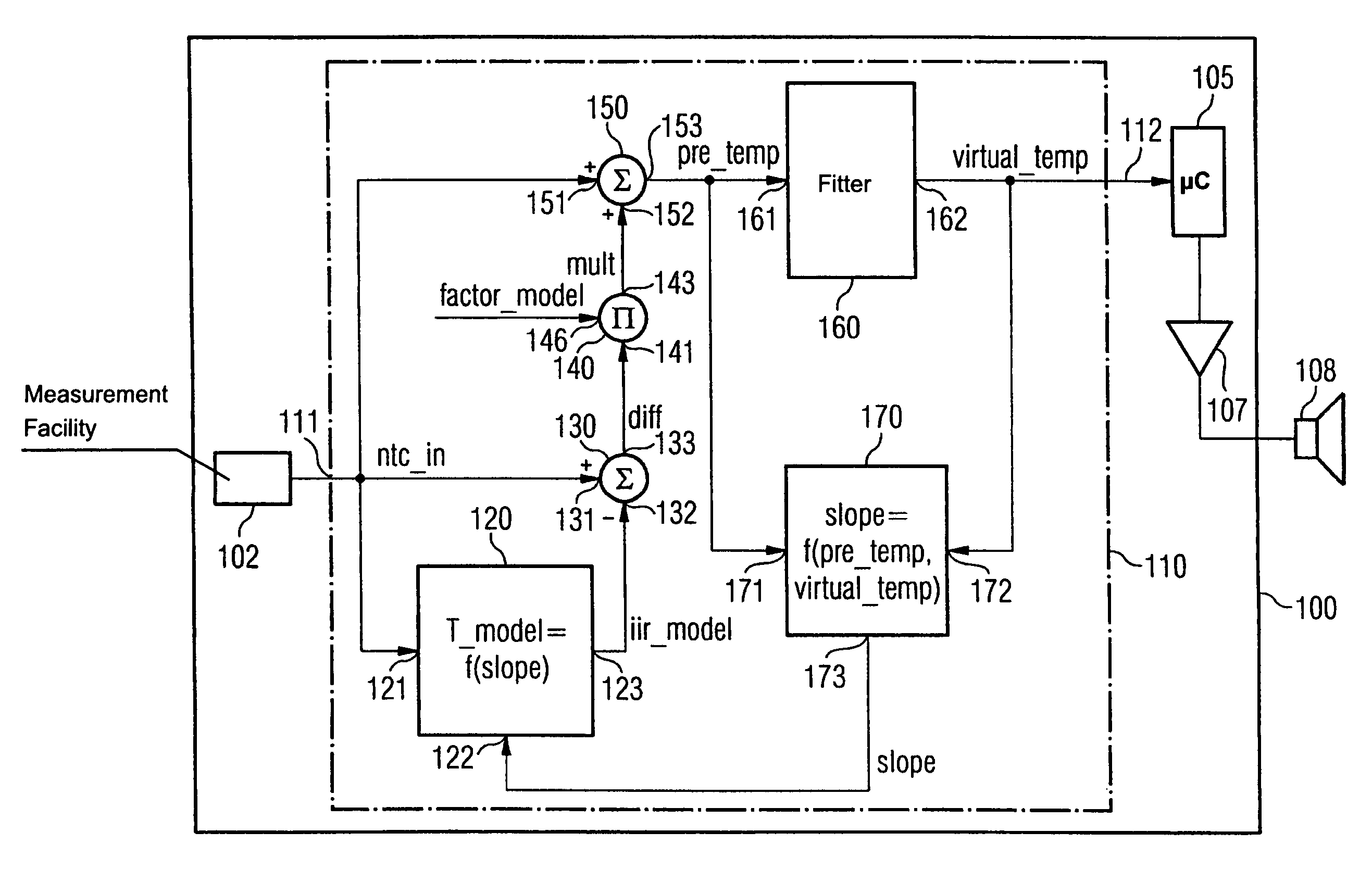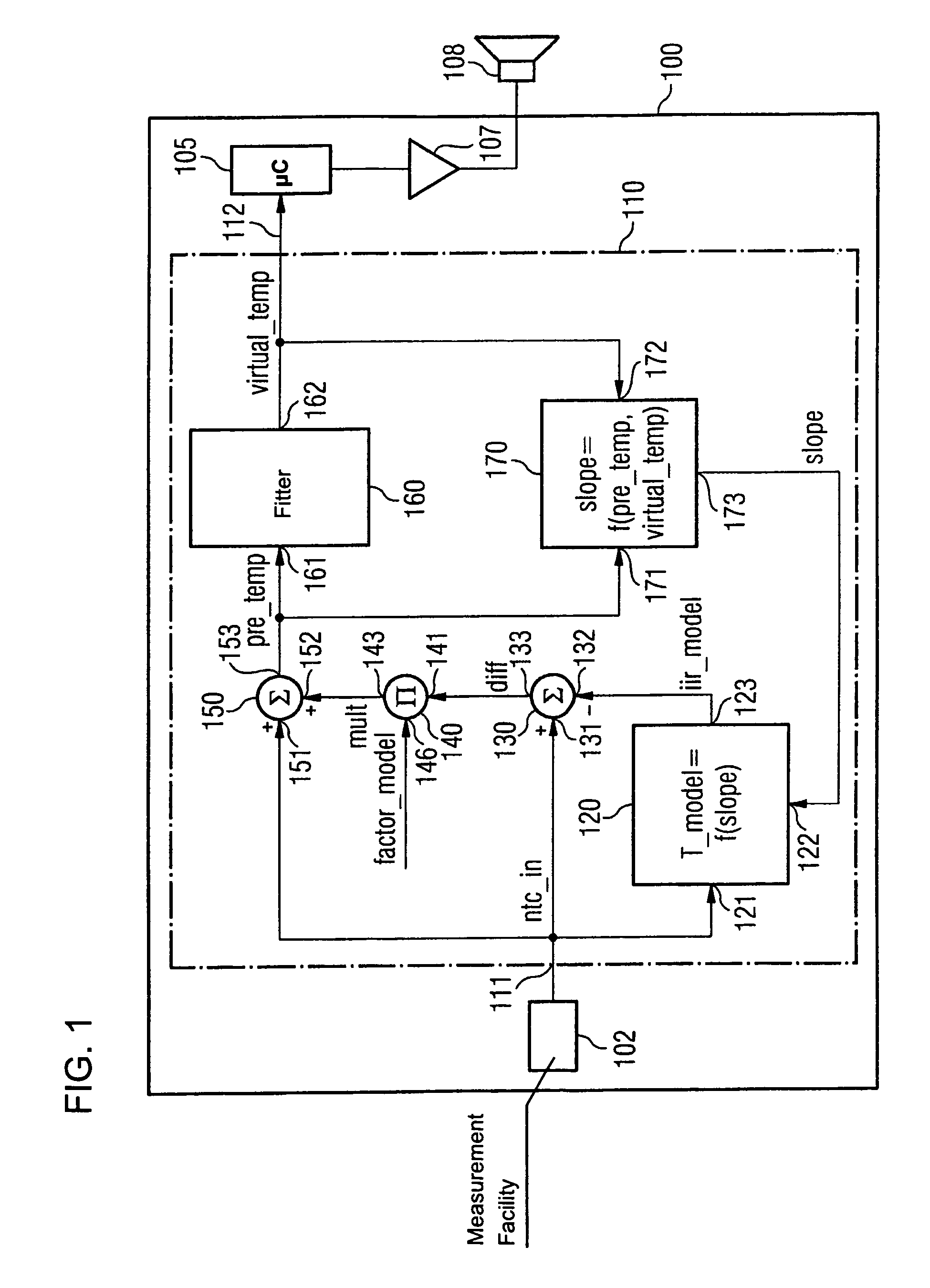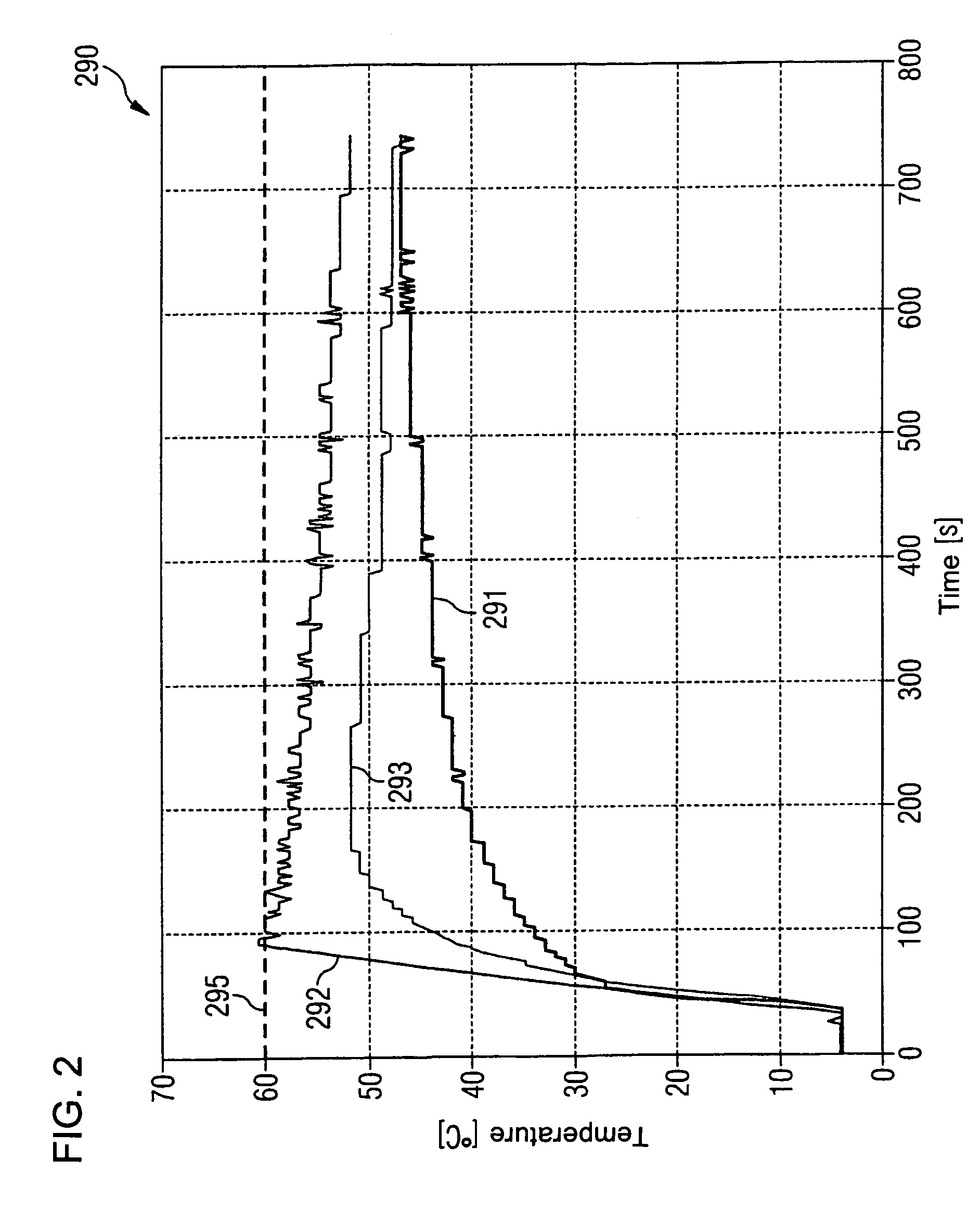Robust evaluation of a temperature measurement signal by using a dynamic adaptation of a computational model
a temperature measurement signal and computational model technology, applied in computations using non-denominational number representations, fire alarms, instruments, etc., can solve problems such as undesirable overshoots of artifacts, and achieve the effects of improving the evaluation of temperature measurement signals, preventing or at least reducing false alarm indications
- Summary
- Abstract
- Description
- Claims
- Application Information
AI Technical Summary
Benefits of technology
Problems solved by technology
Method used
Image
Examples
Embodiment Construction
[0051]Referring now to the figures of the drawing in detail and first, particularly, to FIG. 1 thereof, there is shown a thermal alarm indicator 100, which has a temperature sensor or temperature measurement facility 102 implemented in the form of an NTC (negative temperature coefficient) resistance. An output signal ntc_in of the temperature measurement facility 102 is fed to an evaluation device 110. The output signal ntc_in therefore represents the input signal for the evaluation device 110.
[0052]As will be explained in greater detail in the following, the evaluation device 110 is set up such that in the event of a hazard situation, a rise over time of the output signal ntc_in is optimized with a view to, on the one hand, the most rapid possible alarm triggering, and on the other hand, the prevention of artifacts that could result in false alarm indications.
[0053]Connected in series with the evaluation device 110 is a microprocessor 105, which checks the evaluation signal virtual...
PUM
 Login to View More
Login to View More Abstract
Description
Claims
Application Information
 Login to View More
Login to View More - R&D
- Intellectual Property
- Life Sciences
- Materials
- Tech Scout
- Unparalleled Data Quality
- Higher Quality Content
- 60% Fewer Hallucinations
Browse by: Latest US Patents, China's latest patents, Technical Efficacy Thesaurus, Application Domain, Technology Topic, Popular Technical Reports.
© 2025 PatSnap. All rights reserved.Legal|Privacy policy|Modern Slavery Act Transparency Statement|Sitemap|About US| Contact US: help@patsnap.com



